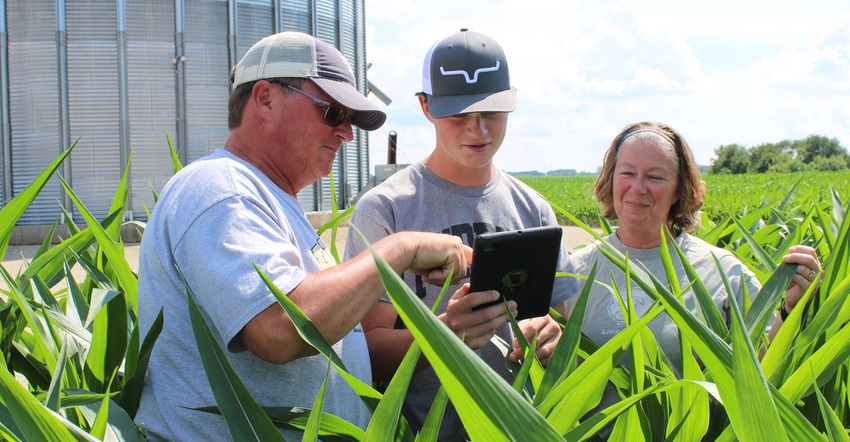August 5, 2021

Software will dominate in tomorrow’s agriculture as producers and consumers rely heavily on technology to make decisions. “We just have to get comfortable being uncomfortable … and just embrace the change,” said Teddy Bekele, chief technology officer of Land O’Lakes Inc.
Bekele spoke at OATSCON21, a virtual conference hosted by Purdue University’s Open Ag Technology and Systems Center to discuss the importance of open-source data — shared data that allows for collaboration and innovation — and its impact on farmers.
New technologies are coming, and the agriculture industry must be ready to accept change, according to Bekele. Some new technologies are here: sensors that constantly collect data, artificial intelligence to relay fertilizer and pesticide application calculations, and apps that help farmers with management decisions. These technologies allow farmers to make better decisions without physically being in the field.
Technologies are going to continue to improve, and access to reliable farm-level and industry data will be increasingly important. Bekele described “more of a software world than a hardware world going forward.”
Why data has value
More data will be generated to keep up with increased software use. Four million data points are projected to be generated on the farm alone by 2035. However, data must be analyzed to have value.
Once data is shared and analyzed, the door is wide open for endless possibilities regarding software and other new technology that can help farmers keep accurate records and make decisions.
Dennis Buckmaster, professor of agricultural and biological engineering at Purdue, points out, “If we are continually asking [a] person ‘What did you do?’, you will always have flawed data.” Data will be the backbone of new methods used to track day-to-day farm operations so farmers can rest assured that they have precise records, he says.
When considering the effects of open-source data and new technologies, Bekele raised the question, “Is it glue or gold?” There are some challenges and drawbacks with data sharing that may seem like glue. One of the most complex challenges is fostering cooperation between companies and tech platforms.
“There needs to be trust among these actors and a common way to share information across platforms,” Buckmaster says.
Data also has an expiration date; if it isn’t shared in a timely fashion, it becomes less useful. Although these potential problems may appear to be glue, open-source data presents itself as “glue with speckles of gold” in the long run. There are endless possibilities that can result from open-source data, but challenges must be addressed.
How could farmers benefit?
There are several ways in which farmers stand to benefit from improved sharing of data. One is tracking carbon credits for farmers who implement carbon sequestration. Buckmaster points to the current lack of a standard technology to assess how much carbon has been sequestered.
He adds, “Carbon credits are going to need to be modeled, and models need data. How much water was used? What implements were used?” Sensors and software can automatically track this information.
Additionally, some markets require producers to prove they use certain technologies before they can gain market access. Utilization of improved technologies will ultimately allow farmers to gain market entry.
Lund is a sophomore in ag communication at Purdue University. Her family is featured in the picture.
You May Also Like




